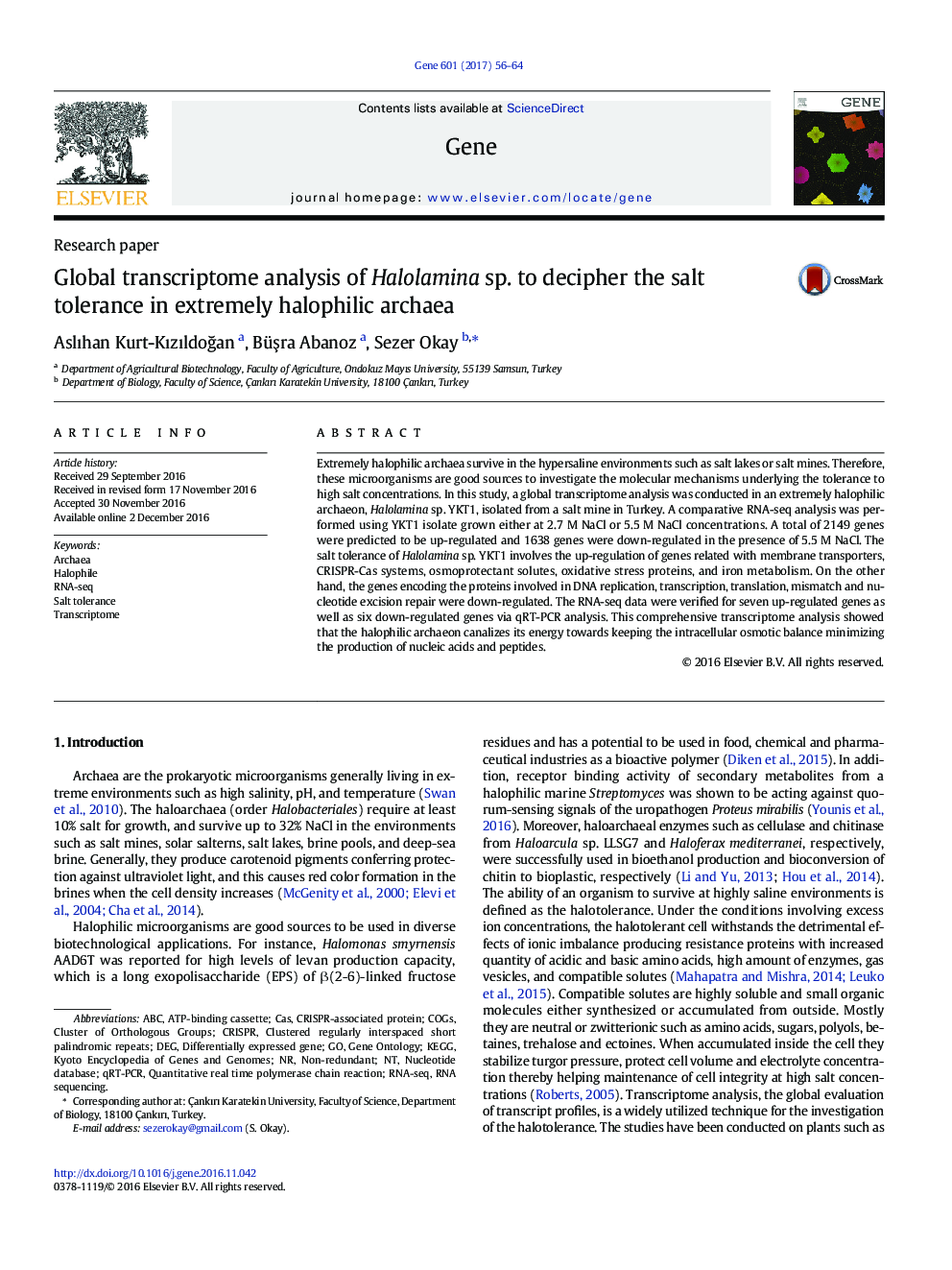| کد مقاله | کد نشریه | سال انتشار | مقاله انگلیسی | نسخه تمام متن |
|---|---|---|---|---|
| 5589434 | 1569835 | 2017 | 9 صفحه PDF | دانلود رایگان |

- The haloarchaeon Halolamina sp. YKT1 was isolated from a salt mine in Turkey.
- Halotolerance was investigated via RNA-seq of YKT1 grown in 2.7Â M or 5.5Â M NaCl.
- The genes related with membrane transporters and osmoprotectants were up-regulated.
- Replication, transcription, and translation related genes were down-regulated.
Extremely halophilic archaea survive in the hypersaline environments such as salt lakes or salt mines. Therefore, these microorganisms are good sources to investigate the molecular mechanisms underlying the tolerance to high salt concentrations. In this study, a global transcriptome analysis was conducted in an extremely halophilic archaeon, Halolamina sp. YKT1, isolated from a salt mine in Turkey. A comparative RNA-seq analysis was performed using YKT1 isolate grown either at 2.7Â M NaCl or 5.5Â M NaCl concentrations. A total of 2149 genes were predicted to be up-regulated and 1638 genes were down-regulated in the presence of 5.5Â M NaCl. The salt tolerance of Halolamina sp. YKT1 involves the up-regulation of genes related with membrane transporters, CRISPR-Cas systems, osmoprotectant solutes, oxidative stress proteins, and iron metabolism. On the other hand, the genes encoding the proteins involved in DNA replication, transcription, translation, mismatch and nucleotide excision repair were down-regulated. The RNA-seq data were verified for seven up-regulated genes as well as six down-regulated genes via qRT-PCR analysis. This comprehensive transcriptome analysis showed that the halophilic archaeon canalizes its energy towards keeping the intracellular osmotic balance minimizing the production of nucleic acids and peptides.
Journal: Gene - Volume 601, 15 February 2017, Pages 56-64